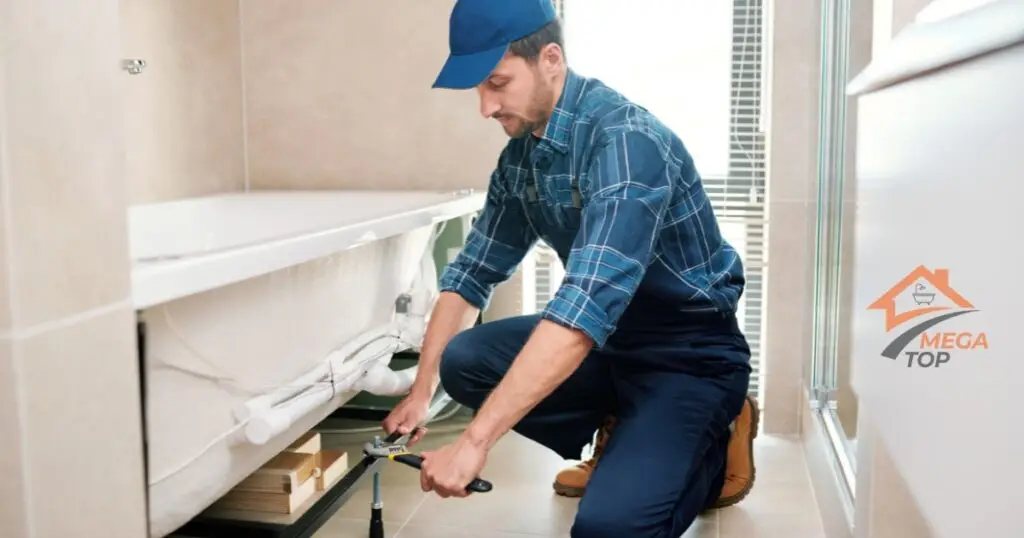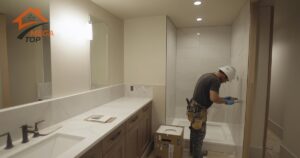What is Involved in a Bathtub Installation?
Installing a bathtub requires careful planning, the right materials, and proper tools to ensure a smooth process. Key materials include the bathtub itself, plumbing supplies, and waterproofing materials. Essential tools are pipe wrenches, sealant, a tub drain wrench, and possibly a reciprocating saw if the old tub needs to be removed.
The installation process typically follows these steps:
- Removing the old bathtub (if necessary)
- Preparing the bathroom space and floor
- Installing or adjusting plumbing
- Setting the new tub in place
- Sealing and waterproofing the surrounding areas
Assessing Your Skills for DIY Bathtub Installation
Before attempting a DIY bathtub installation, evaluate whether you have the necessary skills. Bathtub installation involves a mix of plumbing, construction, and waterproofing knowledge. A simple mistake in any of these areas can lead to long-term damage.
Here are some of the challenges DIYers often encounter:
- Difficulty with aligning and fitting the bathtub
- Handling plumbing without leaks
- Ensuring proper waterproofing to avoid future damage
The Role of Plumbing in Bathtub Installation
Plumbing is one of the most crucial aspects of bathtub installation. It requires the precise fitting of pipes, drainage, and faucets. If the plumbing isn’t installed correctly, you could face leaks or drainage problems.
Risks of improper plumbing include:
- Water damage to walls and floors
- Mold and mildew growth from leaks
- Increased repair costs due to faulty connections
How to Prepare Your Bathroom for a New Bathtub
Preparing the bathroom is an important step before installing a new bathtub. First, you need to measure your bathroom to ensure that the new tub will fit. This includes checking doorways and other obstacles.
The next step is to remove the old bathtub:
- Turn off the water supply
- Disconnect the plumbing fixtures
- Carefully remove any surrounding tiles or tub surround
- Pull out the old tub while avoiding damage to the walls or floor
Choosing the Right Bathtub for Your Space
Selecting the right bathtub depends on your bathroom size, design preferences, and budget. Popular options include alcove bathtubs, freestanding tubs, and corner bathtubs.
When choosing a bathtub, consider these factors:
- Bathtub material (e.g., acrylic, cast iron, fiberglass)
- Installation requirements based on your bathroom’s layout
- The aesthetic style that complements your bathroom
Installing a Freestanding Bathtub vs. Built-In Bathtub
Freestanding and built-in bathtubs have different installation processes. Freestanding tubs are generally easier to install, as they don’t require support framing or as much wall preparation. However, they may involve more complex plumbing if the fixtures are floor-mounted.
Built-in bathtubs (like alcove or drop-in types) require:
- Framing or reinforcement to support the tub
- Careful fitting into a pre-determined space
- Wall and floor sealing for waterproofing
Common Bathtub Installation Mistakes to Avoid
Bathtub installation can go wrong if certain steps aren’t followed properly. Common mistakes include:
- Inadequate framing that doesn’t fully support the bathtub’s weight
- Improperly sealed connections leading to water leaks
- Insufficient waterproofing, which can lead to long-term water damage
How Long Does Bathtub Installation Take?
The time needed for bathtub installation depends on the method you choose. A professional installer can typically complete the job in 1-2 days, including time for plumbing adjustments and sealing.
For DIY installations, the process could take several days, especially if you run into unexpected challenges like plumbing issues or difficulty removing the old tub.
Costs of Bathtub Installation: DIY vs. Professional
When comparing DIY and professional installation costs, keep in mind that DIY might seem cheaper upfront but can be costly if mistakes are made. A DIY installation requires you to buy or rent specialized tools, which can add to the overall cost.
Here’s a cost breakdown:
- DIY installation: $300 – $700 for materials and tools
- Professional installation: $1,000 – $3,000, depending on the complexity
Hiring a professional ensures the job is done right the first time and includes warranties or guarantees for their work.
The Importance of Waterproofing During Bathtub Installation
Waterproofing is essential to avoid future water damage. A properly installed bathtub must be sealed at all edges, including where it meets the walls and floor. This prevents water from leaking into the surrounding structure.
Common waterproofing errors include:
- Using the wrong type of sealant
- Failing to seal all critical areas around the tub
- Overlooking the importance of a moisture barrier behind wall tiles
Tools You Need for Bathtub Installation
Installing a bathtub requires several essential tools to complete the job efficiently. These tools include:
- Pipe wrench and adjustable wrench
- Tub drain wrench
- Level for ensuring the tub sits evenly
- Caulking gun for sealing
- Reciprocating saw for cutting old tub parts, if needed
You may also need specialized plumbing tools, which can be costly to purchase or rent.
Why Hire a Professional for Bathtub Installation?
Hiring a professional for bathtub installation offers several advantages:
- Expertise: Professionals have experience with different types of bathtubs and bathroom layouts, ensuring proper fitting and installation.
- Efficiency: They can complete the job much faster than a DIYer, often within a day or two.
- Quality: Professional installers provide high-quality workmanship, reducing the risk of leaks or other issues down the road.
Hiring a Professional Bathtub Installer: What to Expect
When you hire a professional, they will first inspect your bathroom to ensure it’s ready for the installation. They will handle the plumbing adjustments, fit the bathtub correctly, and make sure everything is sealed and waterproofed.
If any unexpected problems arise, such as outdated plumbing or structural issues, professionals are equipped to handle them efficiently.
Bathtub Installation Warranties and Guarantees
Most professional bathtub installers offer warranties and guarantees on their work. This means if any issues arise after installation, they will address them at no extra cost. Warranties can give you peace of mind, ensuring long-lasting quality in your new bathtub.
Compare DIY vs. Professional Services:
Hidden Costs of DIY Bathtub Installation
When taking on a bathtub installation as a DIY project, it’s easy to underestimate the true cost. Many DIYers forget to factor in:
- The cost of specialized tools
- Additional materials, such as sealants, piping, or waterproofing layers
- Possible repair costs if something goes wrong
Advantages of Professional Bathtub Installation
Hiring a professional can save you time and stress, while ensuring your bathtub is installed correctly. Professionals avoid common DIY mistakes such as improper leveling or sealing. This means fewer future repairs and longer-lasting performance. Additionally, professional installations come with warranties, providing peace of mind for homeowners.
FAQ
Yes, but bathtub installation requires plumbing knowledge, precision, and specific tools. It's often best to hire a professional to avoid costly errors.
DIY costs can vary based on the materials and tools you need, but professional installation ensures quality and ranges from $1,000 to $3,000 depending on the project.
A professional can complete the job in a day or two, while DIY installation may take longer, especially if you run into unexpected challenges.
Yes, specific plumbing and construction tools are required. Without them, installation can become much more difficult and time-consuming.
Incorrect installation can lead to plumbing leaks, water damage, and improper fit. Hiring a professional ensures everything is installed correctly from the start.





